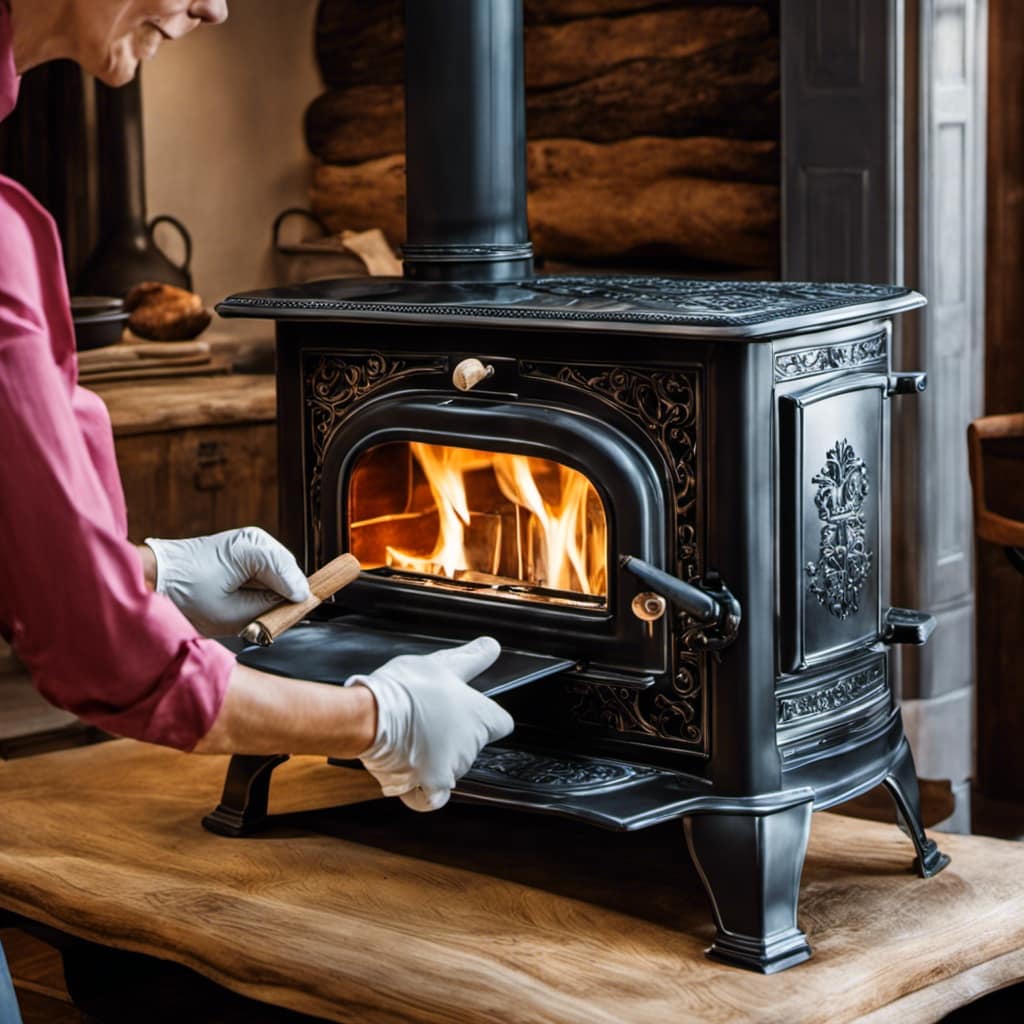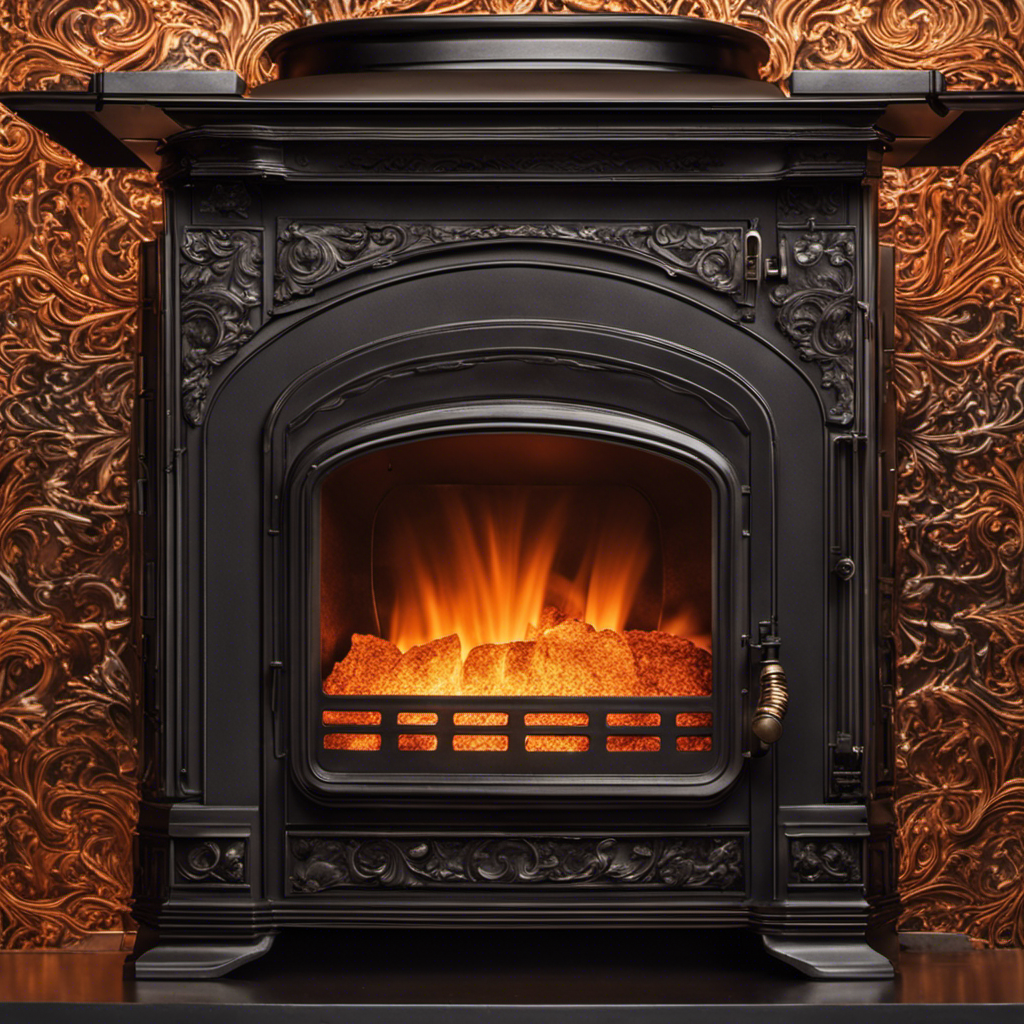As a child raised in a log cabin, I have always treasured the cozy warmth of a wood stove. But what should you do when that comforting fire becomes a potential hazard? Fear not, as I am here to help you navigate the process of safely extinguishing a fire in a wood stove, prioritizing your safety.
From assessing the situation to gathering the necessary tools, I’ll show you how to regain control and protect your home from potential disaster.
So let’s dive in and learn how to handle a fiery situation with confidence.
Key Takeaways
- Ensure flammable materials are at a safe distance from the wood stove.
- Gather a fire extinguisher and heat-resistant gloves.
- Close the stove’s air vents and door tightly to control airflow.
- Use a metal shovel or tongs to remove burning materials from the stove.
Assessing the Fire
I need to quickly assess the fire to determine the best course of action. When evaluating safety, the first thing I do is ensure that all flammable materials are kept at a safe distance from the wood stove. I also make sure that there are no combustible objects near the stove that could potentially catch fire.
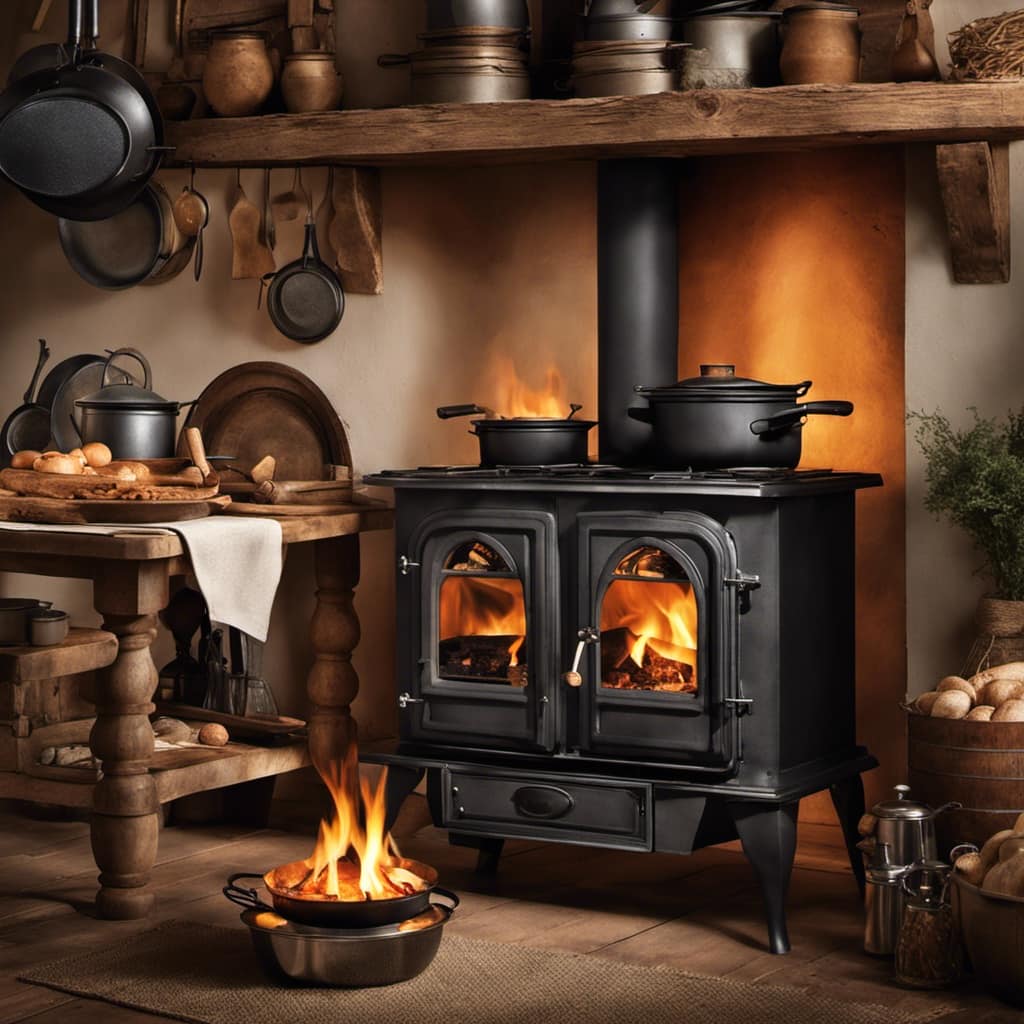
Next, I carefully monitor the temperature inside the stove. Using a thermometer, I check if the fire is burning at an optimal temperature. If the temperature is too high, it could indicate a potential hazard. In such cases, I take immediate action to reduce the temperature by adjusting the airflow or removing excess fuel.
Gathering the Necessary Tools
To successfully combat a fire in a wood stove, it’s crucial to gather the necessary tools such as a fire extinguisher and heat-resistant gloves. Understanding fire behavior and choosing the right fire extinguisher are key factors in effectively and safely putting out a fire.
When it comes to fire extinguishers, it’s important to choose the right type based on the fuel involved. For wood stove fires, a Class A fire extinguisher is recommended as it’s designed to extinguish fires involving ordinary combustibles like wood and paper. It’s important to read the labels on fire extinguishers carefully to ensure they’re suitable for wood stove fires.
In order to fully understand fire behavior, it’s important to know the three elements that sustain fire: heat, oxygen, and fuel. By removing any of these elements, the fire can be extinguished. When combating a fire in a wood stove, it’s essential to cut off the oxygen supply by closing the stove’s air vents and door.
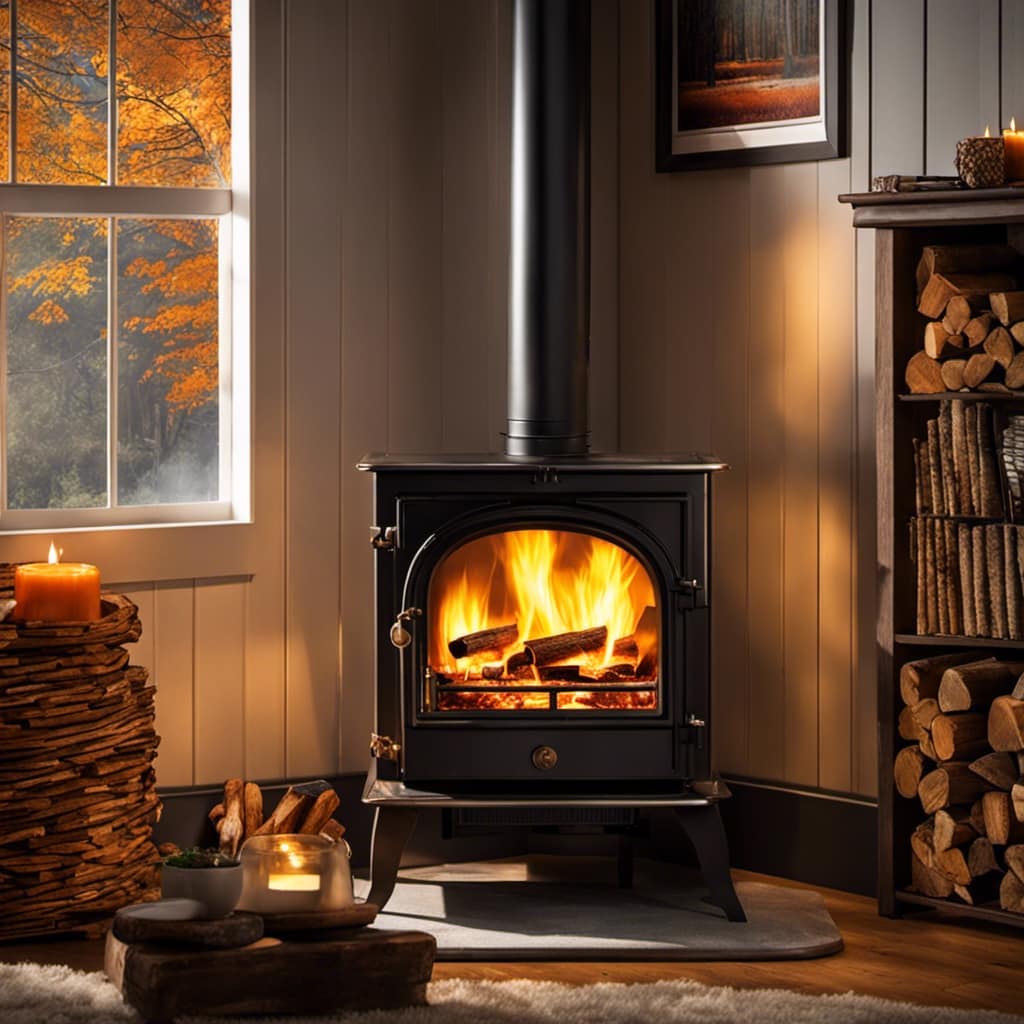
To summarize, when putting out a fire in a wood stove, gathering the necessary tools like a suitable fire extinguisher and heat-resistant gloves is crucial. Additionally, understanding fire behavior and choosing the right fire extinguisher based on the fuel involved are important factors in successfully extinguishing the fire.
Controlling the Airflow
Effectively controlling the airflow is crucial to safely extinguishing a fire in a wood stove. It can be done by closing the stove’s air vents and door tightly.
Proper ventilation is essential to ensure that the fire burns efficiently and that the smoke is effectively drawn out of the stove.
One tip for maintaining optimal airflow is to open the air vents fully when starting a fire, allowing for a good draft and the quick ignition of the wood. Once the fire is established, you can adjust the air vents to control the intensity of the fire.
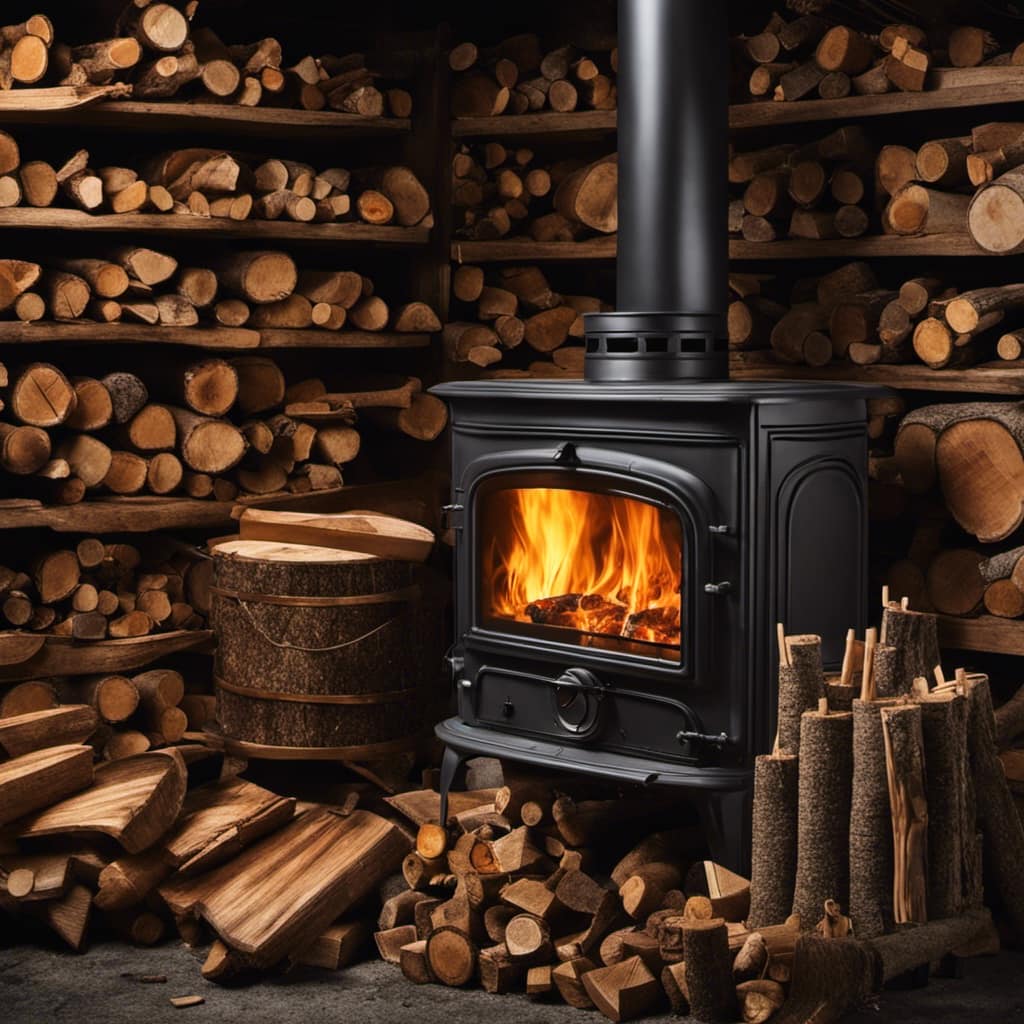
Closing the vents partially will slow down the burn rate, while closing them completely will eventually extinguish the fire.
Remember to keep the stove door closed tightly to prevent air leakage and maintain consistent airflow.
Removing Burning Materials
The key to safely extinguishing a fire in a wood stove is to close the air vents and remove any burning materials. This is crucial for fire safety and fire prevention.
When it comes to removing burning materials, here are three important steps to follow:

Protective Gear: Before attempting to remove burning materials, it’s important to put on appropriate protective gear, such as fire-resistant gloves and goggles, to prevent any injuries.
Use a Metal Shovel: A metal shovel is the best tool to use for removing burning materials from a wood stove. It’s important to use a metal shovel instead of a plastic one, as plastic can melt under high temperatures.
Place in a Fireproof Container: Once the burning materials are removed from the wood stove, it’s important to place them in a fireproof container, such as a metal bucket with a lid, to ensure that the fire doesn’t spread.
Safely Extinguishing the Fire
How can I safely extinguish the fire in my wood stove? When it comes to fire safety measures, it is crucial to know the proper steps to take in case of an emergency. Here are some important tips to prevent accidents and safely put out a fire in your wood stove:
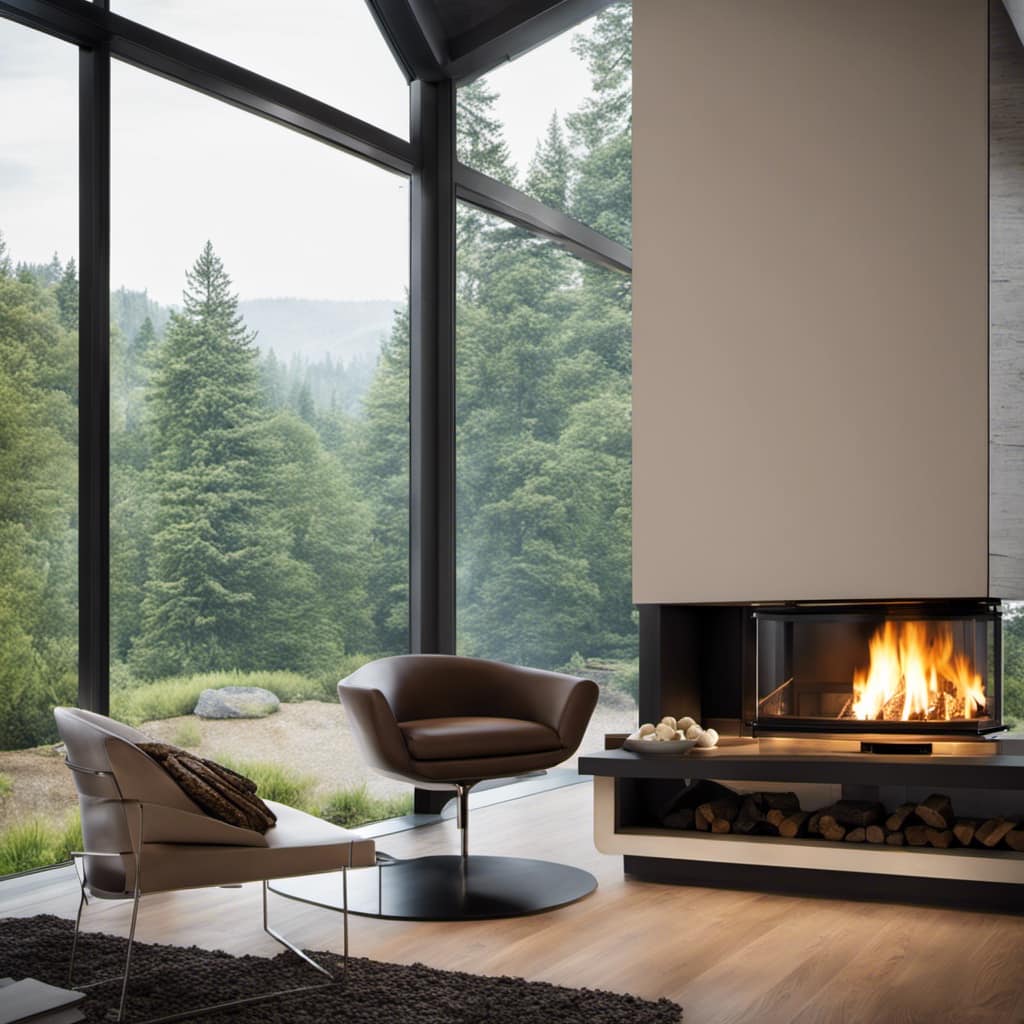
| Step | Action | Details |
|---|---|---|
| 1 | Close the damper | By closing the damper, you can control the airflow and reduce the intensity of the fire. |
| 2 | Remove burning materials | Use a metal shovel or tongs to carefully remove any burning logs or debris from the stove. |
| 3 | Smother the fire with baking soda | Sprinkle a generous amount of baking soda over the flames to smother and extinguish the fire. |
Remember to always prioritize safety when dealing with fires. It is important to have a fire extinguisher nearby and to never leave a fire unattended. Regular maintenance and cleaning of your wood stove can also help prevent accidents and ensure its proper functioning. Stay informed and prepared to ensure the safety of yourself and your home.
Frequently Asked Questions
What Are the Common Causes of Fires in Wood Stoves?
Common causes of fires in wood stoves include improper installation, lack of maintenance, and using inappropriate fuel. To prevent fires, ensure proper installation, clean and inspect the stove regularly, and only burn dry, seasoned firewood.
Can I Use Water to Put Out a Fire in a Wood Stove?
Using water to put out a fire in a wood stove? Oh, absolutely not! It’s like asking if I should use a hairdryer in the shower. Water can cause steam and potentially crack the stove. Not a good idea!
How Often Should I Clean My Wood Stove to Prevent Fires?
To prevent fires, it’s important to clean my wood stove regularly. I should clean it at least once a year or more frequently if I notice signs like excessive smoke, black soot, or difficulty in starting a fire.
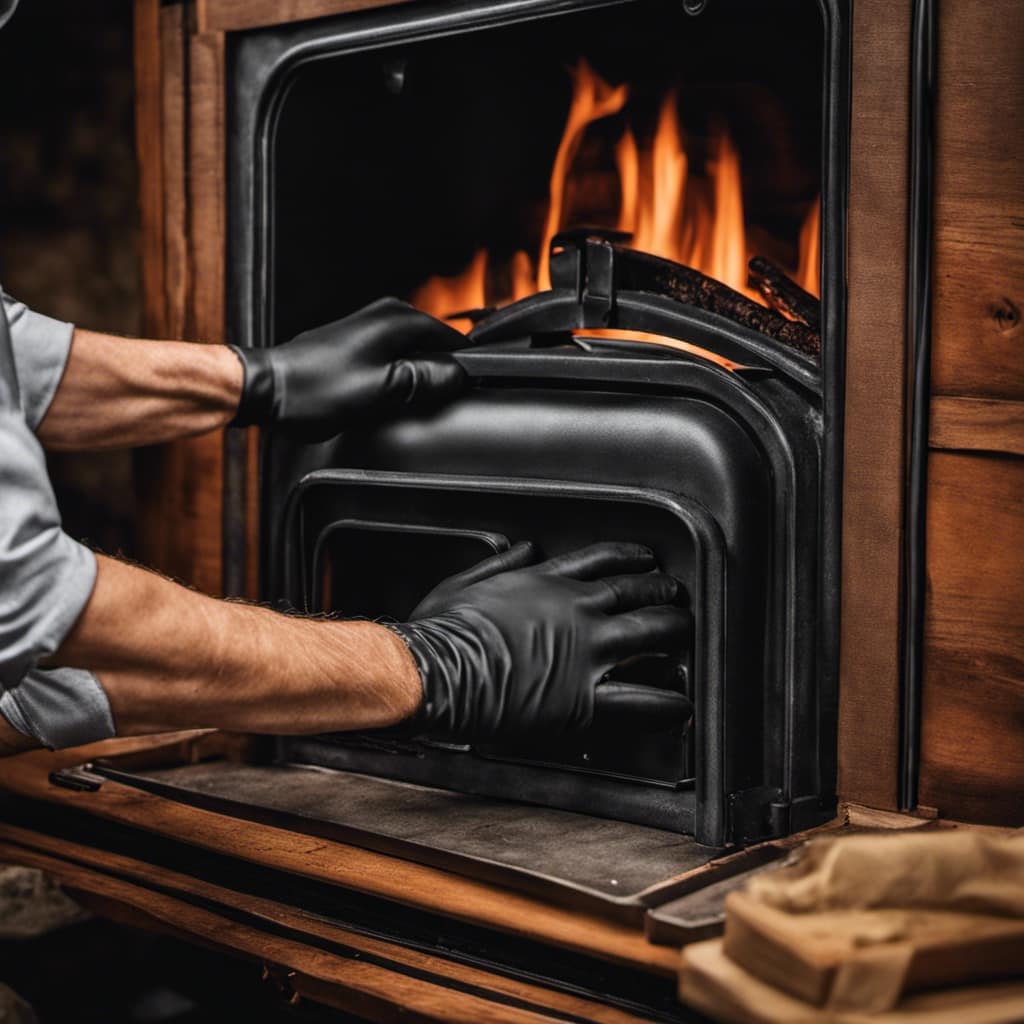
Are There Any Safety Precautions I Should Take Before Attempting to Put Out a Fire in a Wood Stove?
Before attempting to put out a fire in a wood stove, it’s crucial to take safety precautions. Keep a fire extinguisher nearby and have a fire blanket ready. These tools can help control and extinguish the fire effectively.
Can I Leave the House While a Fire Is Burning in the Wood Stove?
I wouldn’t recommend leaving the house while a fire is burning in the wood stove. It’s important to prioritize safety and be present in case any issues arise. Always follow the necessary precautions when putting out a fire in a wood stove.
Can I Use the Same Method to Put Out a Fire in a Water Heater Wood Stove?
No, you cannot use the same method to put out a fire in a water heater wood stove as you would with a regular wood stove. Water can damage a water heater wood stove, so it’s best to use a fire extinguisher or smother the fire with sand or baking soda.
Conclusion
In the end, with careful assessment, the right tools, and controlled airflow, the roaring fire in the wood stove can be tamed.
As the flames subside and the embers fade, the stove breathes a sigh of relief, like a weary traveler finding respite.
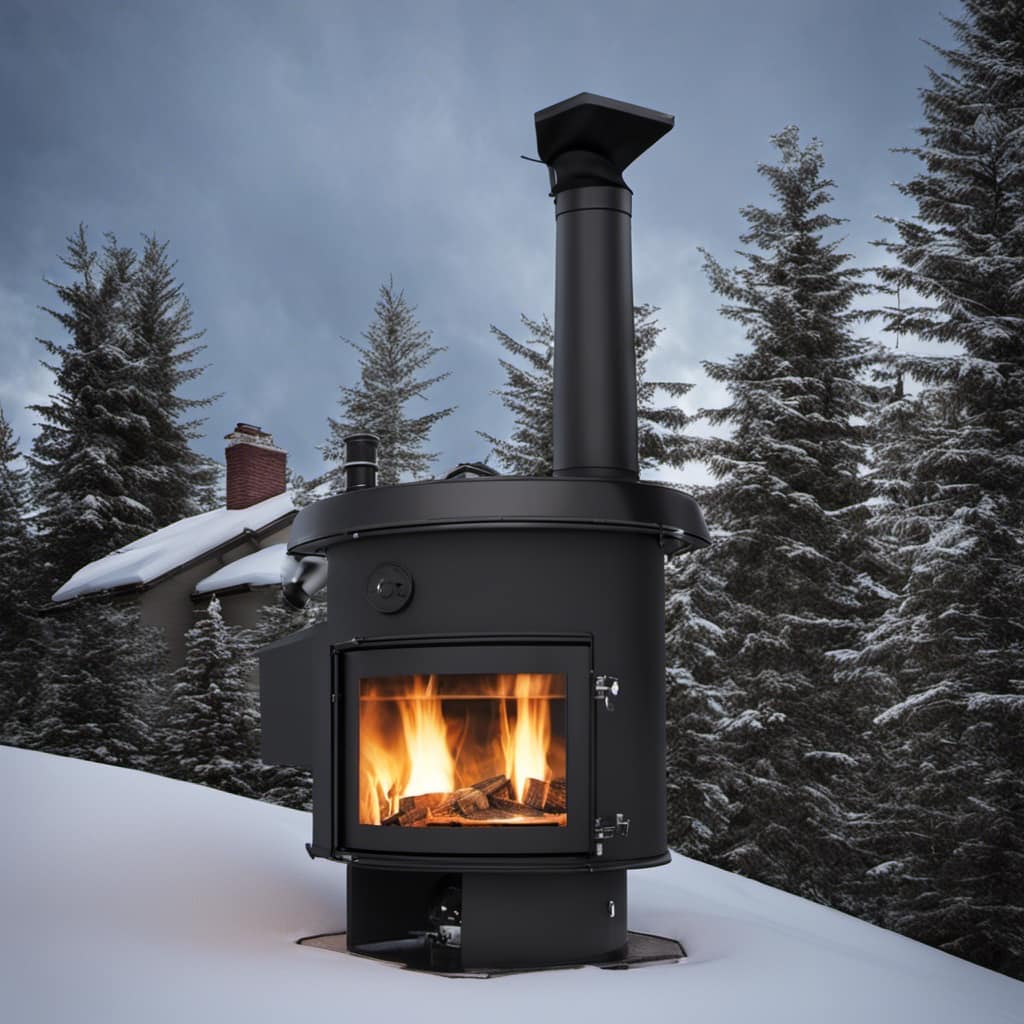
With burning materials removed and the fire safely extinguished, the wood stove rests, ready to warm and comfort once again.
Growing up surrounded by the vast beauty of nature, Sierra was always drawn to the call of the wild. While others sought the comfort of the familiar, she ventured out, embracing the unpredictable and finding stories in the heartbeat of nature.
At the epicenter of every remarkable venture lies a dynamic team—a fusion of diverse talents, visions, and passions. The essence of Best Small Wood Stoves is crafted and refined by such a trio: Sierra, Logan, and Terra. Their collective expertise has transformed the platform into a leading authority on small wood stoves, radiating warmth and knowledge in equal measure.


